by Rajan P. Parrikar
First published on SAWF on July 8, 2002
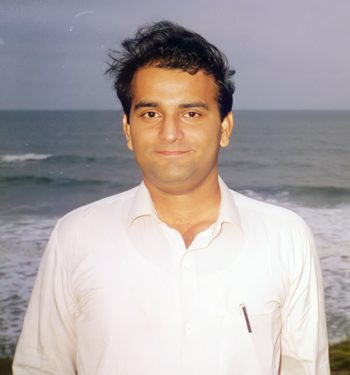
Rajan P. Parrikar (San Francisco, 1989)
Photo by: Dr. Anand Bariya
Namashkar.
In this edition of Short Takes we shall investigate Desi (‘Deshi’), a raga of highly vakra build and independent swaroopa. Like other ragas in this genus, there is a measure of ‘abstraction’ involved in its manufacture. That is to say, a bare aroha-avaroha does not summarize its essence nor is it a simple pastiche of linear tonal sentences sown together. Considerable thought and taleem go into the mastery of such ragas. Perhaps that is one reason why Desi is seldom heard on the concert stage today despite the rich rasa and aesthetics it embodies.
Desi is sometimes denominated as ‘Desi Todi’ but the modern form carries no trace of the Todi-anga. A version known as Utari Desi or Komal Desi deploys both rishabs, komal in the avarohi mode, thus opening up the possibility of a Todi-anga.
Throughout this discussion, M = shuddha madhyam.
Raga Desi
Desi’s kernel is obtained through a chalan-bheda on Raga Kafi. This is not to say that its originator conceived it with a conscious and deliberate intent of turning Kafi around. Nonetheless, ragas are not born in a vacuum; elemental melodic templates and the accumulated corpus of ragangas colour and influence the active imagination. The process of accretion of ragangas and distinct ‘melodic molecules,’ and their occurrence in disparate melodies opens up potentially rich areas of inquiry. A serious research effort in this direction awaits inauguration.
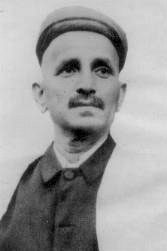
Vishnu Narayan Bhatkhande
Desi comes in three primary flavours subject to the type and proportion of dhaivat employed. The D-only flavour enjoys the most circulation. It is followed by the version with both dhaivats but where D preponderates. The d-only type of Desi is less common.
With the D-only Desi, the choice of that is clear (Kafi) but along with the Kafi-anga, a measure of Asavari-anga may be advanced through deergha use of the komal gandhar, as we shall shortly see. In the case of the d-only Desi, the Asavari association naturally suggests itself but the attack on rishab is through the agency of Kafi.
Let us now amplify on these themes. First, the key tonal sentences are written out. For purposes of illustration, we shall work with the D-only flavour.
The definitive poorvanga phrases are:
S, R (R)n’ S, R M P, M P (M)g, R, R g S R (R)n’ S
R M P D M P (M)g R, R P (M)g R, R (R)g, S R (R)n’ S
Notice the strong rishab, its Kafi-like behaviour, and the trailing S R (R)n’ S cluster. Pancham and rishab are nyasa swaras. The kans (graces) mediating the uccharana are critical to Desi. The soft landing on gandhar from P through a grace of M and the eventual repose on R sweep a delicious arc. Gandhar may be elongated (deergha bahutva) judiciously to create a brief chhaya of Asavari and then dissipated by nyasa on R.
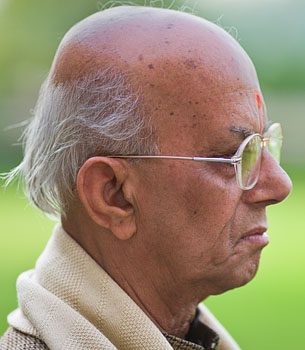
Ramashreya Jha “Ramrang”
© Rajan P. Parrikar
The uttaranga activity is now characterized.
R M P D M P S”, S”–>P, D M P (M)g R
Gandhar and dhaivat are varjit in arohi prayogas. Nishad is often given short shrift as seen above. The avarohi meend from S”–>P is a stand-out.
M P n S”, P n S” R”, R” n S”, S”–>P, P n D P, D M P (M)g R
Nishad is weak and must be carefully treated. A straight P D n S” and S” n D P are not recommended since they tend to strengthen Kafi’s influence.
In the bi-dhaivat Desi flavour, a soupçon of d is introduced occasionally through clusters such as P d M P (M)g R.
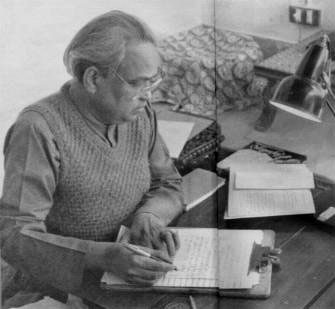
Kumar Gandharva
It should to be evident by now that Desi’s tonal space is not easy to get a handle on. Pandit Vishnu Narayan Bhatkhande has chosen to place the raga under the Asavari that (a somewhat questionable call) but the swaroopa and nuances of the different flavours have not escaped his critical gaze in his monumental exegesis, Hindustani Sangeet Paddhati. Bhatkhande has also documented the views of two of his gurus, Mohammad Ali Khan of Jaipur and Wazir Khan of Rampur, including a dhrupad, dekho ri eka main jogi, taught to him by the latter.
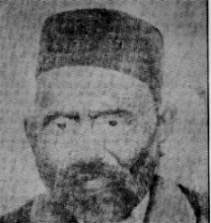
Wazir Khan of Rampur
The ability of the peerless Ramashreya Jha “Ramrang” to cleave through and illuminate the raga’s core with precision, clarity and economy of word is astounding. This tour de force was recorded over the telephone.
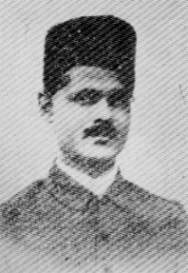
S.N. Ratanjankar
Several Desi classics are assembled below. The key lakshanas will be immediately recognized, the auxilliary details will show variance. We begin with the D-flavoured Desi.
In BAIJU BAWRA (1953), composer Naushad paired Amir Khan and D.V. Paluskar. Legend has it that when possible names were suggested, Khansaheb insisted on having D.V. Paluskar as his foil: aaja gawata mana mero.
A younger Ramashreya Jha elaborates on two traditional compositions of ‘Adarang’ in this crisp All India Radio performance. The vilambit, patwara na lage.
And the druta, sanchi kahata hain ‘Adarang’ yaha.
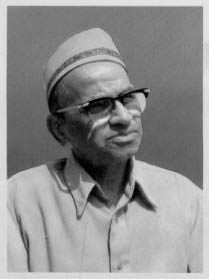
Baasavraj Rajguru
The lakshanas of Desi are nicely threaded by D.V. Paluskar in his slower naiyya mori bhayi followed by the aforementioned Adarang druta, sanchi kahata hai.
Basavraj Rajguru is in fine fettle as he deals a traditional sadra followed by Adarang’s cheez.
Desi is a vocalist’s domain and very few instrumentalists are up to the demands placed by its exacting character. This selection of Ravi Shankar, sparing of the dhaivat, emits flashes of Sarang alluded to earlier by Jha-sahab.
Bade Ghulam Ali Khan‘s classic recording of his own bandish: manuva larje.
The next several items exhibit the bi-dhaivat flavour of Desi; the reader is encouraged to measure the respective proportions.
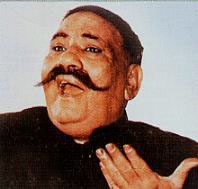
Bade Ghulam Ali Khan
‘Aftab-e-Mousiqui’ Faiyyaz Khan presents a full course meal, skillfully blending the dhaivats in this cocktail preceded by an alap magnifique.
Faiyyaz Khan’s entree – Adarang’s sanchi kahata hain. And for dessert, a dhamar.
S.N. Ratanjankar wields Adarang with a tinge of d through PdMP (M)g at 2:18.
Omkarnath Thakur‘s is mostly a D-oriented Desi. There is a fleeting abhas of d, for instance, just after 0:59: kadama ki chaiyya.
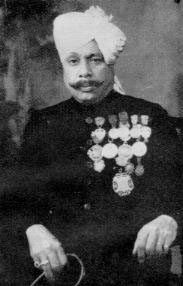
Faiyyaz Khan
Kumar Gandharva, and his nuanced swara-lagav.
In the concluding leg, we turn to the d-flavoured Desi where, as a consequence, the Asavari anga is more explicit.
The Rampur doyen Mushtaq Hussain Khan offers a cheez of ‘Daraspiya’ (Mehboob Khan of Atrauli).
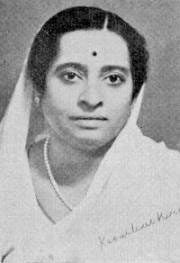
Kesarbai Kerkar
Kesarbai Kerkar‘s rendition of Sadarang’s composition, mhare dere aa’oji, reveals Jaunpuri-like M P d n S” clusters, but look out for the M P D n S” passage beginning at 2:01.
Raga Govardhani Todi
This aprachalita raga is a specialty of the Rampur-Sahaswan vocalists although some Agra musicians (for instance, Faiyyaz Khan) have been known to render it as well. As in the case of Desi, the “Todi” appellation is misleading because there is no Todi-anga in Govardhani Todi.
The raga rests on a Desi base and is supplemented with two special interleaving strands, one drawn from Kafi – M’ P’ D’ n’ S – and the other inspired by Darbari – M’ P’ (n’)d’ (n’)d’ S.
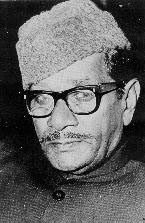
Nissar Hussain Khan
